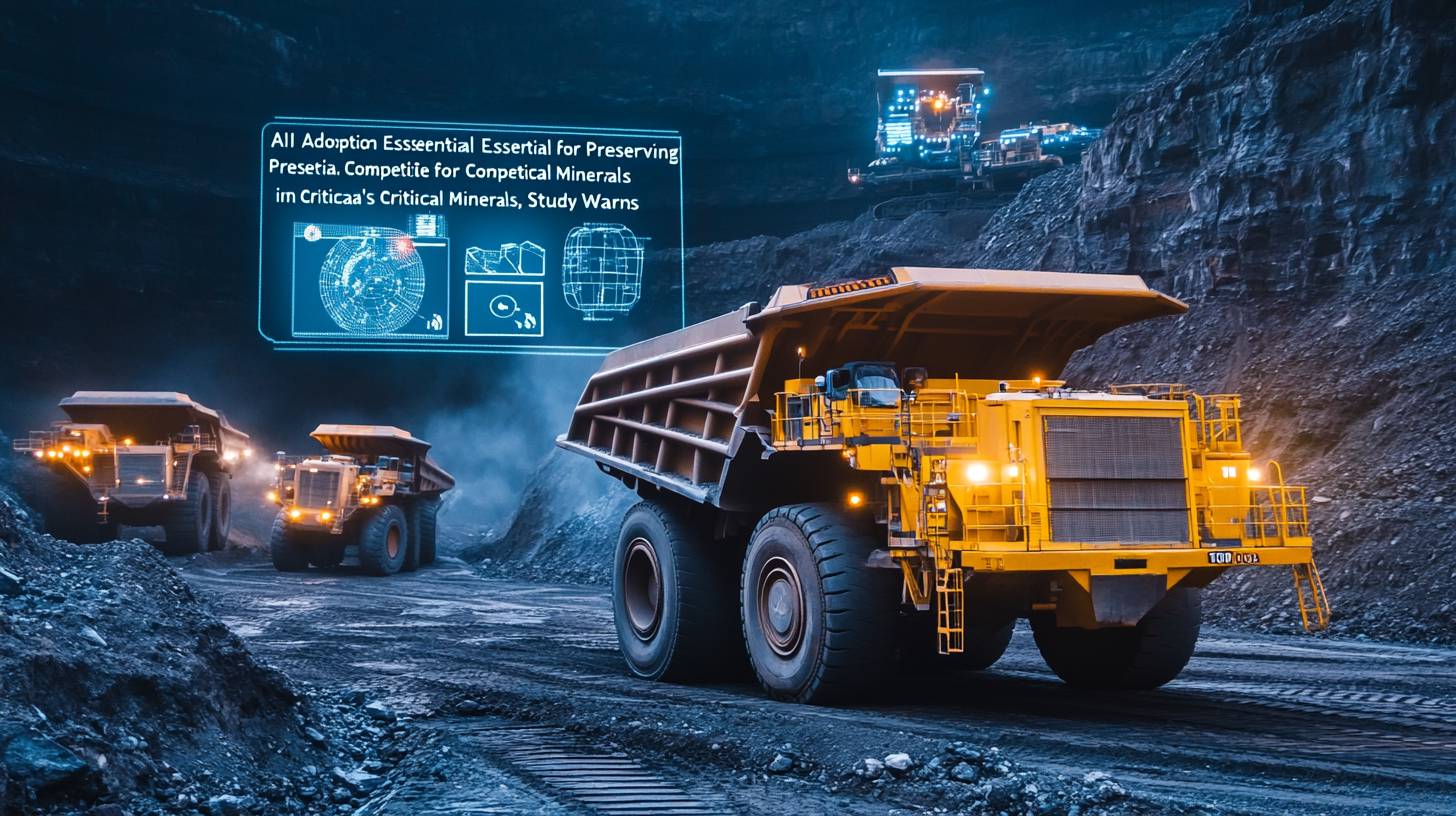
Australia’s critical minerals industry in jeopardy without AI implementation
Australia’s leadership in the worldwide critical minerals sector faces significant risks, especially concerning the extraction of essential resources such as copper, lithium, nickel, zinc, and cobalt. A newly released study by Monash University and the University of Tasmania has expressed alarm that the nation could forfeit its competitive advantage if it neglects to incorporate artificial intelligence (AI) into its mining practices.
Australia has traditionally been a frontrunner in producing these vital minerals, essential for technologies like electric vehicles and renewable energy storage; however, the global environment is swiftly transforming. Nations including China and the United States are fervently investing in AI-based mining innovations, which present substantial benefits regarding efficiency, cost savings, and resource exploration.
The study cautions that unless there is a deliberate pivot towards AI, Australia may lag behind in both production capabilities and technological advancements. This situation could pose severe consequences for the nation’s economy, especially as the demand for critical minerals is projected to escalate in the forthcoming decades. Investors must recognize that the absence of AI integration might result in diminished profitability and a potential drop in Australia’s market presence in this growth-oriented sector.
The disruptive power of AI in mineral discovery and extraction
AI possesses the capacity to transform the methods used for mineral exploration, extraction, and processing. By utilizing machine learning techniques and sophisticated data analysis, mining companies can vastly improve their capability to locate new mineral deposits, refine extraction methods, and decrease operational expenses. This is of particular importance for minerals like lithium and cobalt, which are in high demand for use in batteries for electric vehicles and renewable energy storage systems.
A significant benefit of AI in mineral exploration is its capacity to analyze extensive amounts of geological information at unprecedented rates. Conventional mineral exploration techniques often depend on manual data examination, which can be labor-intensive and susceptible to human inaccuracies. In contrast, AI can evaluate intricate datasets from multiple sources—such as satellite images, geophysical assessments, and historical mining records—to discern trends and forecast the sites of unexploited mineral reserves. This not only accelerates the discovery phase but also mitigates the risks associated with expensive exploration setbacks.
Regarding extraction, AI-powered automation can enhance the efficiency of mining activities by optimizing machinery utilization, decreasing energy use, and minimizing waste. For instance, AI technologies can continuously monitor and adjust the functionality of mining equipment in real-time, guaranteeing that resources are harvested as efficiently as possible. This can result in considerable cost reductions, especially in remote or hard-to-reach mining locations where operational costs are generally elevated.
Furthermore, AI can significantly contribute to improving sustainability in the mining industry. By optimizing resource extraction and reducing waste, AI technologies assist mining firms in lessening their ecological impact. This is especially vital as investors and regulators increasingly emphasize sustainability alongside environmental, social, and governance (ESG) criteria in their decision-making processes.
For Australian mining enterprises, embracing AI could be a pivotal factor, allowing them to sustain their competitive advantage in the international market. Nonetheless, the opportunity to do so is diminishing, as other countries make swift advancements in this area. Investors should carefully observe trends in AI adoption within the industry, as firms that successfully incorporate these technologies are poised to surpass their competitors in both operational effectiveness and profitability.

